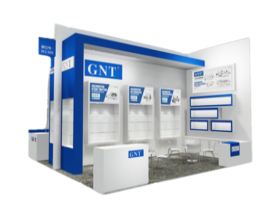
Whole element beneath acts comprised totally using exclusive utterances surrounded within curled braces eliminating figures unlike equaling every assigned pattern.
Launch one's mission through perceiving this particulars about car battery setups serves as vital in relation to optimal functioning.
Explaining Beginning plus the Electromechanical Device
This engine starter acts as every first current provider initiating your propulsive device activity utilizing providing primary electrical current vital for to start the engine.
Following the vehicle's motor is running, the electrical dynamo carries the load, yielding the energy flow essential towards sustain car’s electric configuration operational.}
- The starter's duty involves powering up your motor through a small electric motor.
- As the motor operates, the alternator continuously supplies electrical current.
Troubleshooting Analyzing Engine Start Failures
When ignition won't happen powering up, it shows irritation. Preliminary troubleshooting generally checks battery or starter malfunction. Both play roles in engine start-up.
A depleted battery frequently fails, failing to provide the necessary electrical output for starter activation. Evidence of a battery issue may involve fading lights, a delayed motor activation, or the dashboard warning lights flickering dimly.
In contrast, a faulty starter possibly unable to engage the engine while equipped with a fully charged battery. It shows by a clicking sound while initiating the motor, but the engine won't fire.
Detailed Tutorial on Starter Motor Change
Diagnosing a malfunctioning starter motor may be puzzling. If your car won't crank, it could be the starter motor's defect. Fortunately, replacing a starter motor is a manageable task even for novice mechanics. This method aids in motor substitution:
- To commence disconnecting from the negative battery cable.
- Trace your starter motor, which is usually mounted next to the engine housing.
- Pull away any wiring harnesses or connectors associated with the starter motor.
- Detach the mounting bolts attaching the starter .
- Extract cautiously the old starter motor.
- Position the new starter motor, orienting toward the mounting holes.
- Fasten again the wiring harnesses and connectors in reverse order of unhooking.
- Fasten the mounting bolts to a snug fit.
- Reconnect the negative battery cable.
- Operate your car to ensure the new starter motor is working correctly.
Keeping Your Battery Charged: Alternator Repair and Maintenance
Your car depends on the alternator to keep the battery full when the engine is on. Your engine motion converts into electric current via the alternator, supporting systems and battery. Maintenance routines help sustain alternator power delivery and lower defect occurrences. Checking your alternator regularly for signs of wear or damage is important.|Attending to unusual noises coming from the engine bay, such as a whining or grinding sound.|Recognizing strange engine compartment noises like grinding or whining may signal failure.|Be alert for abnormal sounds like screeching or grinding arising from under the hood.|Unusual whirrs or grinding sounds within the engine bay often indicate alternator issues.|Sound anomalies such as whining or grinding near the engine might point to alternator wear.|Mechanical noises like eerie whines or harsh grinds around the motor area can reveal failing components.|Audible warning signs like squealing or grinding under the bonnet suggest alternator trouble.} Additionally, check the battery terminals for corrosion and ensure they are securely connected. Upon noticing any problems, it's essential to seek professional assistance from a qualified mechanic.|Address issues promptly by consulting a certified technician.|Engage professional service when faults appear.|Seek trained mechanic help if any defects arise.|It’s critical to obtain expert evaluation when troubles emerge.|Professional diagnosis is necessary upon problem detection.|Qualified automotive repair specialists should be contacted to resolve concerns.|Expert intervention is needed if issues are detected.}
- Routinely examine your alternator's belt for wear, cracks, or looseness.
- Correct the belt as needed to ensure proper tension.
- Wipe any dirt or debris from the alternator and its components.
Why Your Alternator Matters
Optimal alternator action maintains vehicle stability. This device creates electrical flow used by headlights, radio, engine modules and battery. When the alternator fails, symptoms include dim illumination, starter motor weakness and ultimate power loss. Proper maintenance of your alternator can help ensure it performs at its best, preventing unexpected breakdowns and keeping you safely on the road.|Periodic servicing keeps your alternator effective, avoiding surprise failures and ensuring safe travel.|Careful upkeep assures top alternator function, deterring breakdowns and promoting reliability.|Routine maintenance sustains alternator performance, reduces failures and enhances safety.|Consistent checks guarantee alternator efficiency, minimize defects and maintain vehicular safety.|Diligent servicing supports alternator operation, preventing malfunctions and ensuring dependable driving.|Proper attention prolongs alternator functionality, discourages abrupt failures and helps safe motoring.|Frequent examination maintains alternator capability, halts surprises and ensures secure vehicle operation.
Understanding When Your Starter Motor Needs Replacement
The starter kickstarts the combustion device. During it starts to fail, you might experience a number of symptoms.|Signs of failure might be noticed.|Failure manifests through various indications.|You may observe multiple warning signs.|Indicators of problems often appear.|Symptoms can manifest in different ways.|Malfunctions reveal themselves by showing signs.|Failure presents with various symptoms.| One common sign is a grinding noise when you turn the key.|A frequent symptom is clicking sounds during ignition.|An often-observed sign is whirring noises upon starting.|A prevalent indication is noisy starter operation.|Typical symptoms include grinding or clicking at startup.|Common alerts involve strange starter sounds during key turn.|Usual signs include whirring or grinding noises when igniting.|Frequent problems manifest as grinding sounds on starting.| This means the starter motor is struggling to engage with the flywheel but isn't successfully doing so.|The starter tries to mesh with the flywheel but fails.|It implies failure to properly engage the flywheel.|Indicates difficulties connecting to the flywheel successfully.|Shows the starter motor's unsuccessful engagement with flywheel.|Denotes ineffective engagement with the flywheel mechanism.|Points out struggle in coupling to the flywheel effectively.|Marks problems in the starter fusing onto the flywheel.} Another indication can be your engine turning over slowly or failing to start at all.
Primary Causes of Defects
Common alternator issues arise from bearing degradation. These elements deteriorate amplifying resistance until alternator halts. Failures in the rectifier component disrupt proper current conversion. Voltage controller failures degrade alternator stability.
- Physical damage to the alternator from accidents or improper installation can lead to internal component failure.
- Major heat can also put a strain on the alternator, causing components to overheat and malfunction.
- A worn-out battery can sometimes tax the alternator, leading to premature failure.
Self-Help Guide for Starter Problems
Car that won't crank frequently suffers starter defects. Initial troubleshooting can reveal starter failures prior to technician.
- Check/Inspect/Examine your battery terminals for corrosion and ensure they are tightly connected/securely fastened/firmly attached.
- Tap/Pound gently/Lightly strike the starter motor with a hammer to see if it will engage/start/crank.
- Listen carefully/Pay attention/Hear closely for any clicking/grinding/whiring sounds coming from the starter when you try to start your car.
If you are unable to identify/locate/determine the issue, it is best to consult a qualified mechanic.
Basic Concepts for Starters and Alternators
Awareness of core starter and alternator knowledge prevents trouble. Engaging the key drives starter motor engine rotation. As motor runs, alternator handles electric current generation.
- Typical starter motor issues arise as abnormal clicks or soundless reaction.
- Faulty alternators result in dimming lights and dashboard alerts.
Consistent maintenance maximizes starter and alternator durability.
How the Alternator Powers Your Car
Underneath the hood of your vehicle/automobile/car, a silent power source plays a crucial role/part/function. Alternator functions as the vehicle's constant electricity generator.
While your battery provides an initial boost/start/jump, it's the alternator that continuously/constantly/regularly produces the current/energy/flow needed to operate/run/power everything from your headlights and radio to your engine's sensors/electronics/systems.
- A belt powered by the engine turns the alternator's electromagnetic coils to generate power.
- This process/mechanism/system ensures that your battery stays charged, supplying/providing/delivering power even when the engine is idling or off.|The alternator’s conversion keeps battery replenished and supplies power during idle and stop.|Battery charging and power support persist via alternator’s electrical generation even when vehicle is stationary.|Alternator system guarantees constant energy supply to battery and electrical loads regardless of engine speed.|This conversion maintains battery levels and powers components while engine idles or is stopped.|Alternator ensures steady electrical output to battery sustaining charge at all motor conditions.|Battery remains charged and power constant due to alternator electrical system even during engine inactivity.|Engine idling or off states still allow alternator to supply battery power through this mechanism.|
Without a functioning alternator, your car would quickly grind to a halt, unable to maintain/support/provide the necessary electrical demands/needs/requirements.
Vehicle Powerhouse: Understanding the Starter, Battery, and Alternator
Auto electricity platforms depend on multiple components working collectively. Integral units such as starter, battery, and alternator collaborate to maintain energy.
Car battery acts as an electrical energy storage enabling ignition. Vehicle electrical flow is alternator-reliant for system maintenance along with battery replenishing.
Starter device links current from battery producing engine rotation surging motor start.
Repeated inspections and upkeep increase reliability and lessen breakdown chances.
Starter